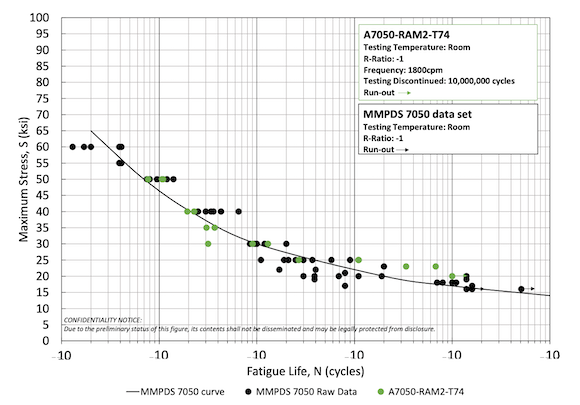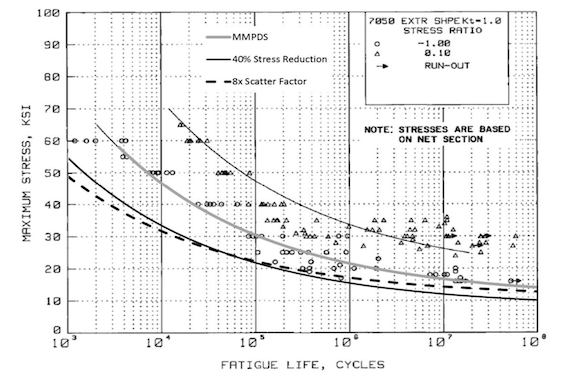Elementum 3D’s A7050-RAM2 aluminium aerospace alloy outperforms 7050 wrought
July 8, 2022

A7050-RAM2, an aerospace and speciality Additive Manufacturing aluminium alloy from Elementum 3D, Erie, Colorado, USA, features a combination of high toughness and strength, as well as good stress corrosion cracking resistance.
Fatigue in metals and alloys can lead to the failure of a material at stresses well below the yield point of a material through a cyclic loading of the material in service. The fatigue life of a material is evaluated based on how many cycles it takes for a material to fail at a given stress below the yield strength of the material. To generate a full stress vs fatigue life/cycles curve (S-N curve), multiple dog-bone samples of the material are tested at a variety of stresses.
Test results are reported as a maximum stress, explains Elementum 3D, but fatigue samples are tested based on amplitude and not simply just one stress value (i.e., the samples are pulled, typically in tension, to a max stress and then unloaded down to a maximum stress per cycle). Often the minimum stress is a compressive stress, so the sample is pulled in tension, unloaded, and then loaded under compression.
This stress amplitude is defined by an R-ratio, which, given a maximum stress in an S-N curve, can be used to calculate the minimum stress. An R-ratio of -1 is fully reversible (i.e., the maximum stress is a tensile stress of a given value and the minimum stress is a compressive stress of the same magnitude as the maximum stress [e.g., a maximum stress of 30 ksi implies a minimum stress of -30 ksi, the negative referring to a compressive stress]). Another common R-ratio is 0.1, where the minimum stress is 10% of the maximum stress (e.g. a maximum stress of 30 ksi would imply a minimum stress of 3 ksi). For tests performed at particularly low maximum stresses, run-out can occur, which is when a test is discontinued before the failure of material after a high number of cycles, such as that reported here as 107.

A7050-RAM2 fatigue results are shown by the green points in Fig. 1. Expected values for 7050 wrought for comparison to A7050-RAM2 were taken from an MMPDS 7050 data set (provided in Fig. 2), shown by the black points and black fit curve in Fig. 1. Results were taken from samples tested with an R-ratio of -1. The A7050-RAM2 data shows similar results as those of the wrought MMPDS 7050 data set.
















